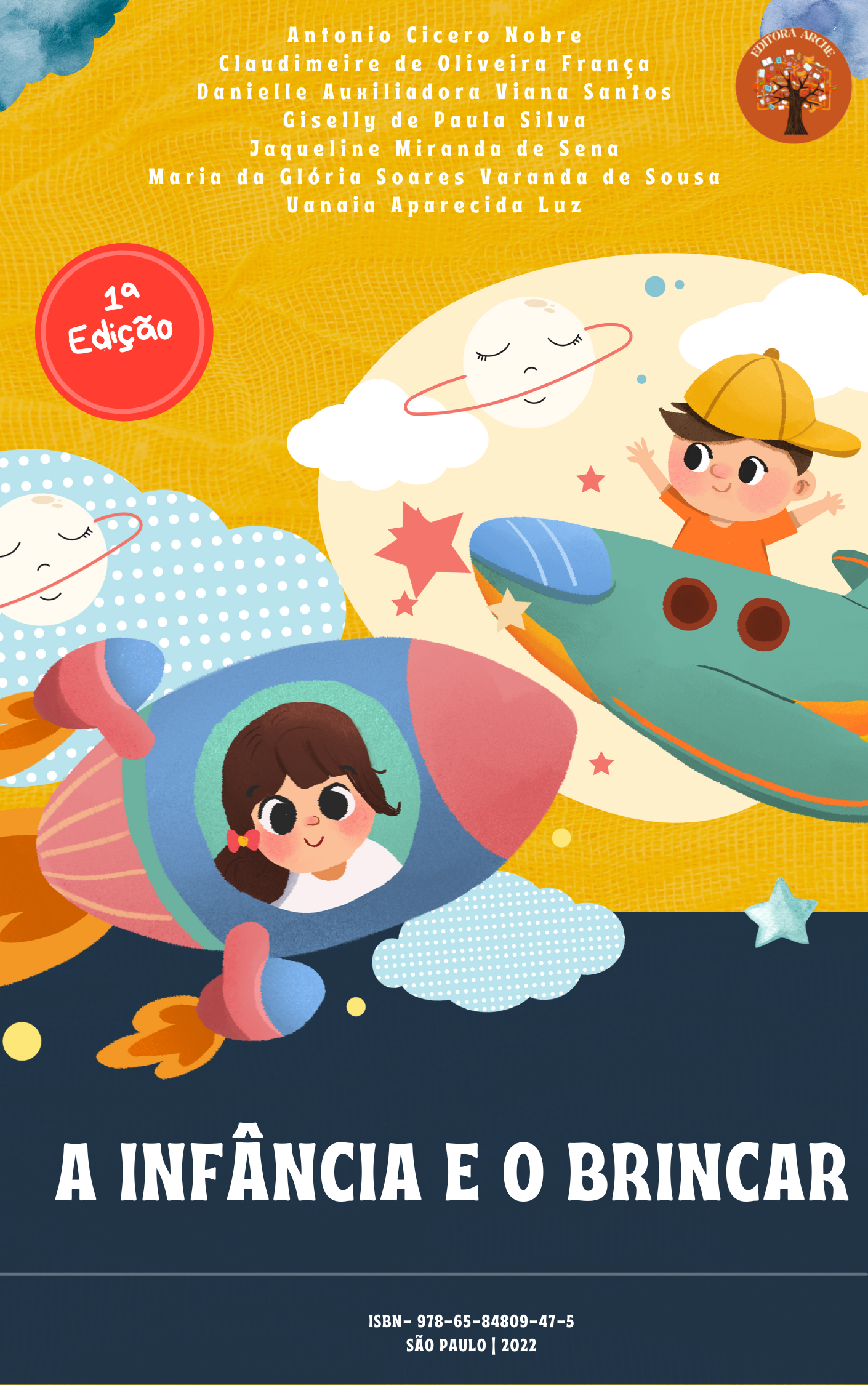CHILDHOOD AND PLAY
Keywords:
The childhood. Playfulness. The playAbstract
This book seeks to establish a relationship between play, childhood immersed in a context of consumption and the technological world of modern society and discusses the role of the school in this environment. In this sense, we want to analyze the relationship between playing in today's society and, thus, the relationship between ludic objects in the lives of today's children and their parents.
Today, where the logic of consumption is strongly present, children are seen as natural consumers, and this is worrying, as they are seduced by goods, industrial toys, lose their freedom and autonomy in creating their own world and become homogenized. We believe that this work contributes to the protection of play as the main activity of children's lives, and the objects used for this should be marked, which, among other things, enhances creativity, playfulness, mobility, autonomy.
In today's society, it is easy to see how technology has changed people's lives, habits and choices. Modern life entails a certain dependence of man on technological innovations. We can no longer imagine our work, study or leisure without a cell phone or a computer with an internet connection nearby, among other devices that we can almost classify as an extension of our body. These innovations are also present in children's lives and activities, and especially in children's toys and games.
When talking about current technology and especially about the child's relationship with it, it is important to refer to the idea of the logic of consumption. This means that we cannot forget that the society we live in is capitalist and therefore we are consumers, and children are no different.
Children are increasingly being targeted by the children's products industry. Some TV commercials target children, whether it's food, clothes and especially toys.
Children spend most of their time immersed in the technological world, especially in the vortex of consumer-oriented advertising, which plays an important role in children's choices and attitudes. In the uncontrollable impulse to accumulate, not only the child must "catch", but the parents strive to have a better standard of living and to be able to provide their children with what they did not have in childhood. In fact, guilty parents try to make up for time away from their children by buying toys, clothes and food they couldn't afford before. a lesson in consumerism that will last the rest of your life.
It is also important to know how to characterize a child in this context, as consumer culture ends up homogenizing people. Individuality, identity is masked in the midst of society's values marked by products and goods. More and more modern toys with a new look have voices, shapes and practically do not use the child's imagination to drive. Activities such as creating, drawing, imagining are in the background. A child's thinking and creativity are later devalued.
In this context, the objective of this book was to establish a relationship between childhood immersed in play, a context of consumption, and the technological world of modern society, questioning the role of the school in this environment and, thus, reflecting on the role of the school. In the play areas for 4-5 year olds, we also emphasize parents' understanding of childhood play and, based on this assumption, we collect information that helps to understand the differences between parents and their children's childhood.
We also hope that this book will help teachers who work with young children and who have so many difficulties in reconciling modern technology with the proposal to encourage creative processes in the classroom, using play as a teaching method and involving the child.
Downloads

Downloads
Published
How to Cite
License
Atribuição CC BY
